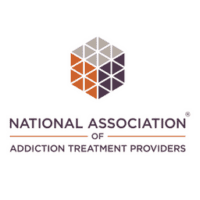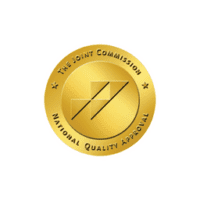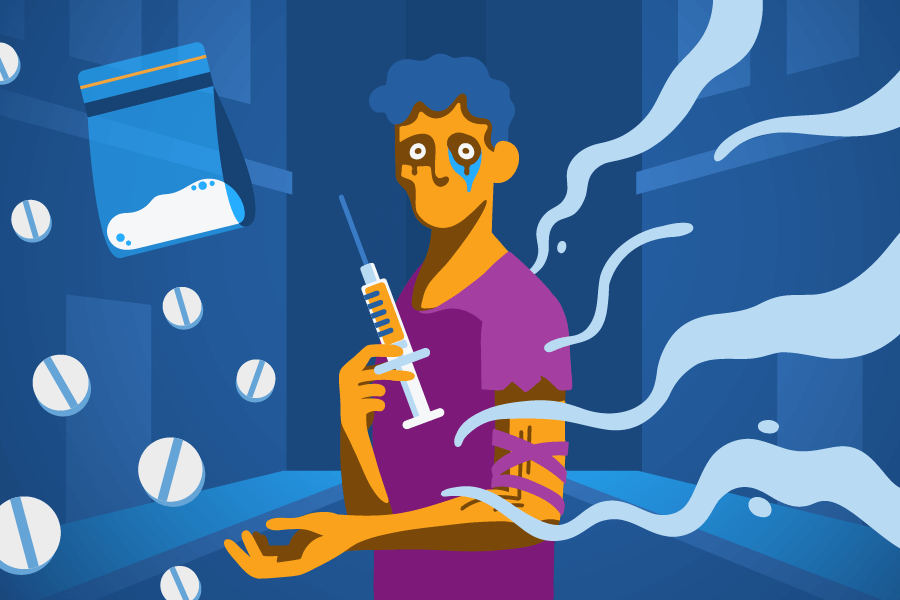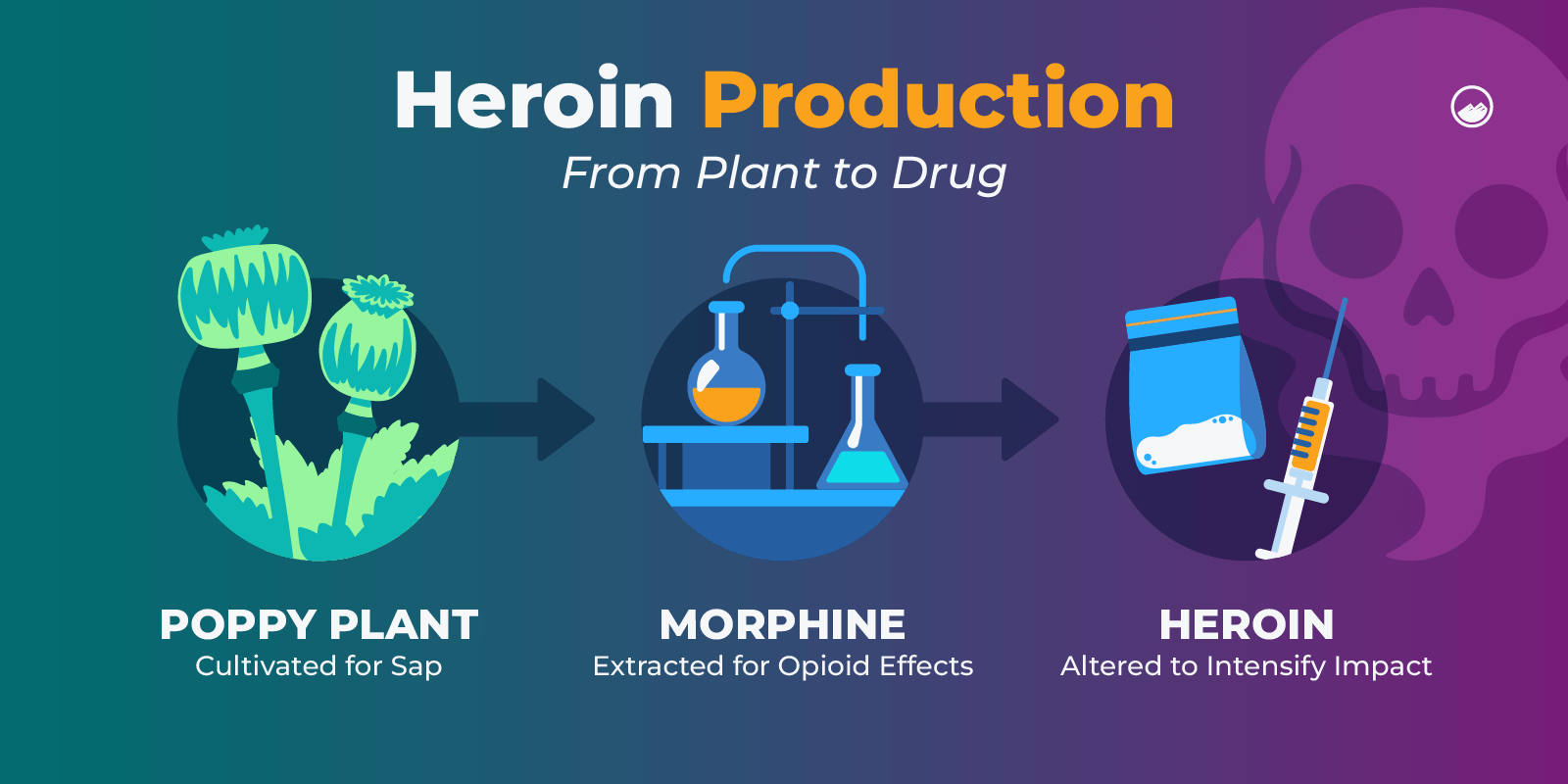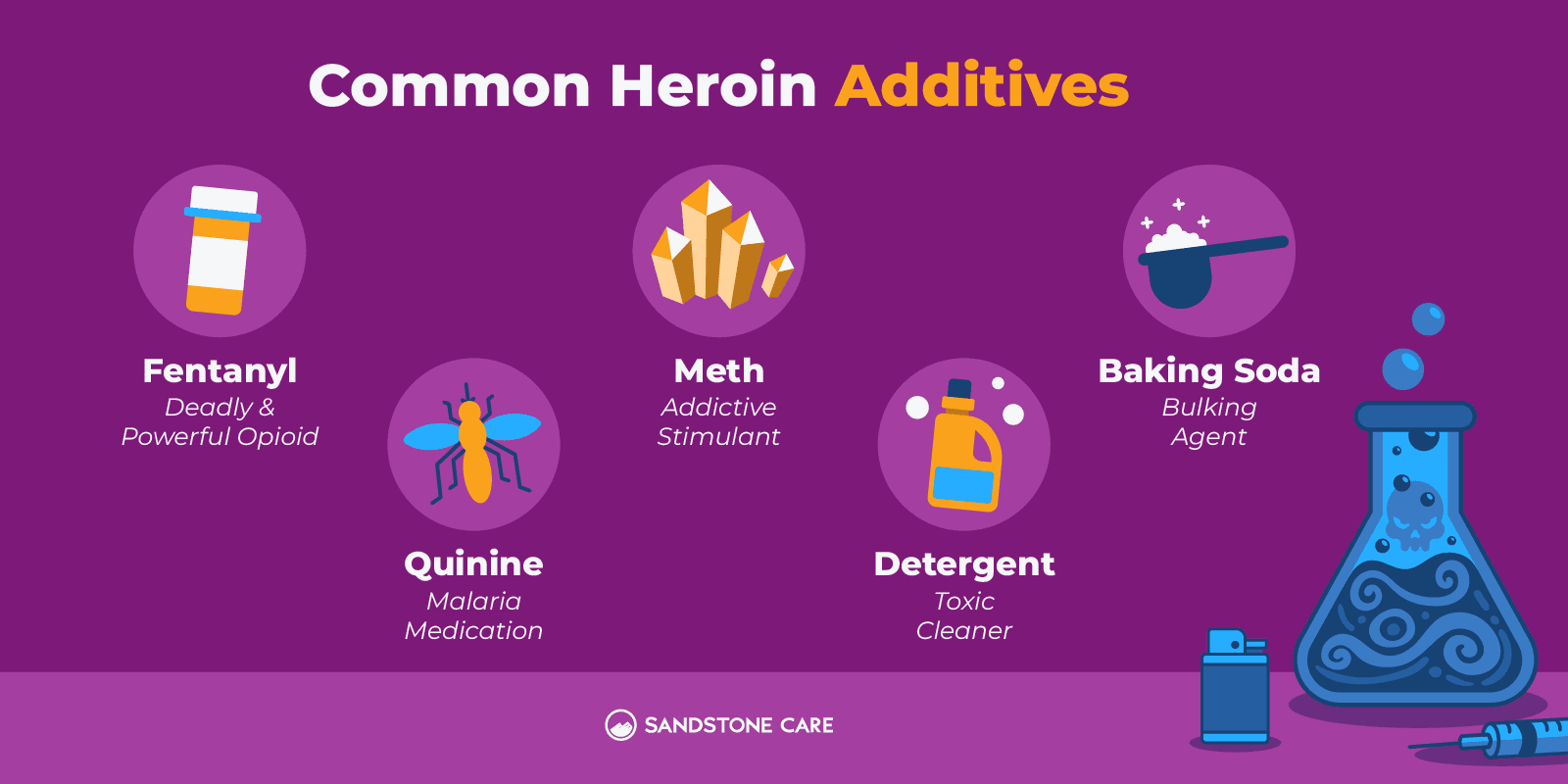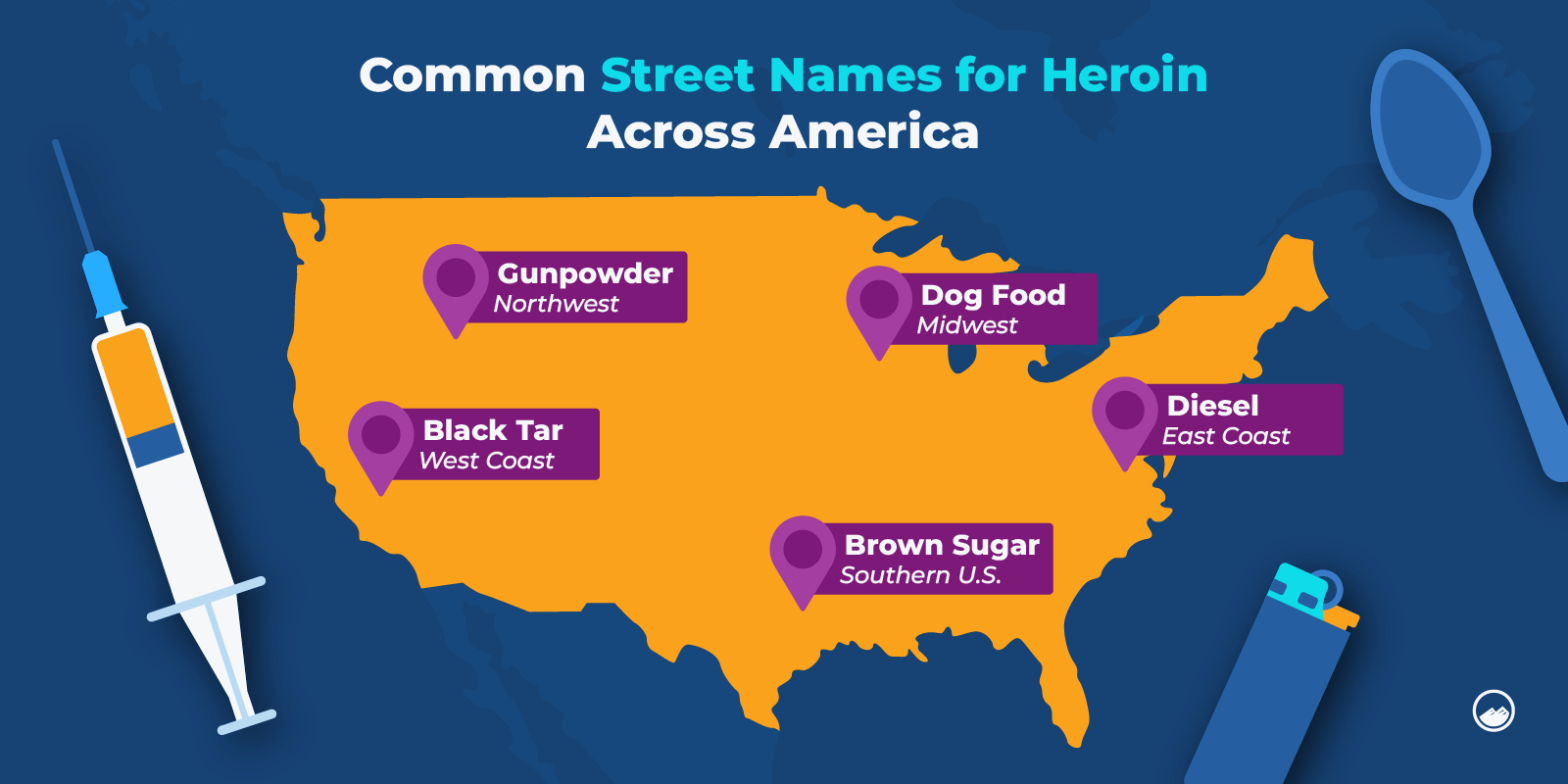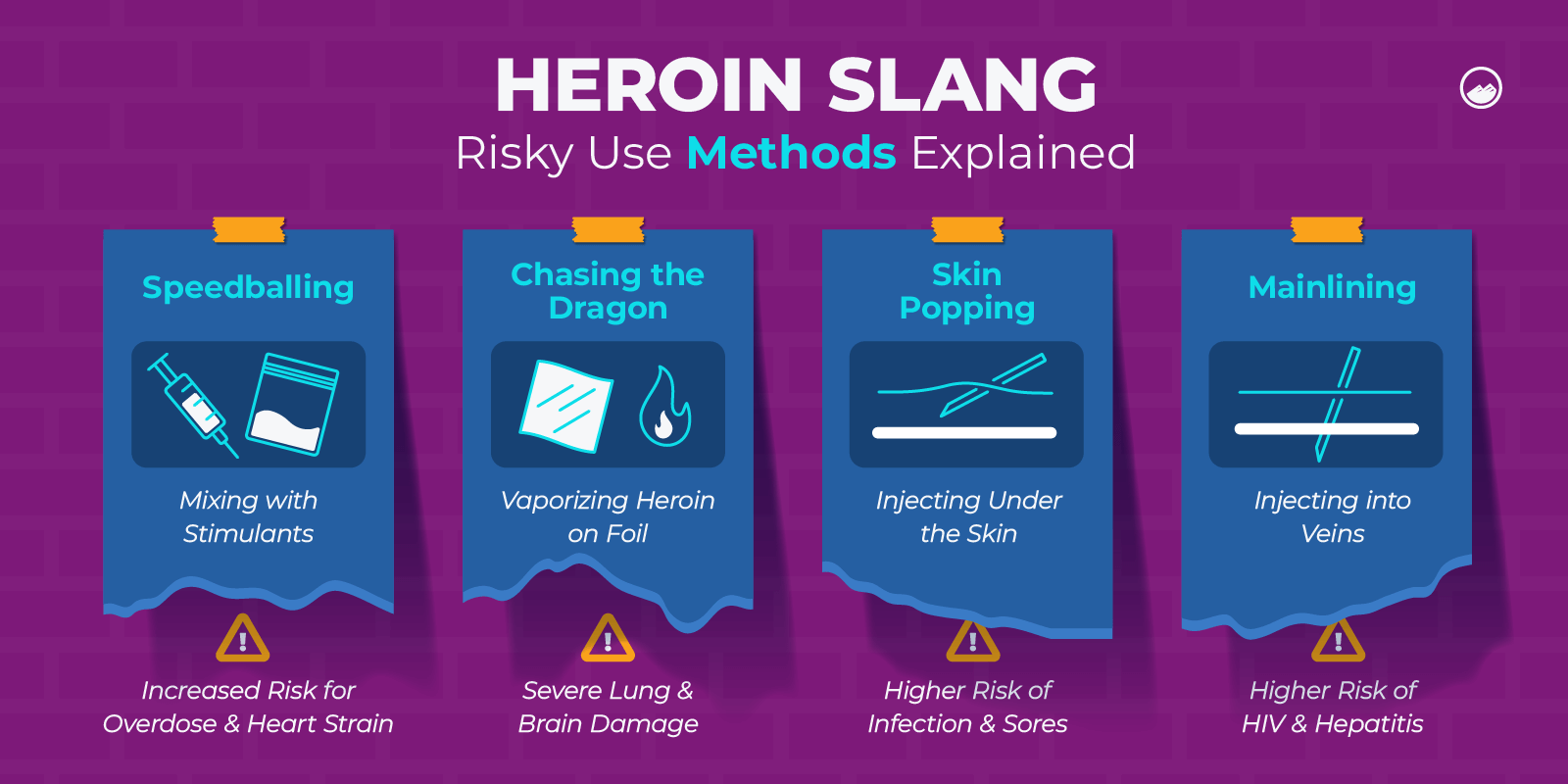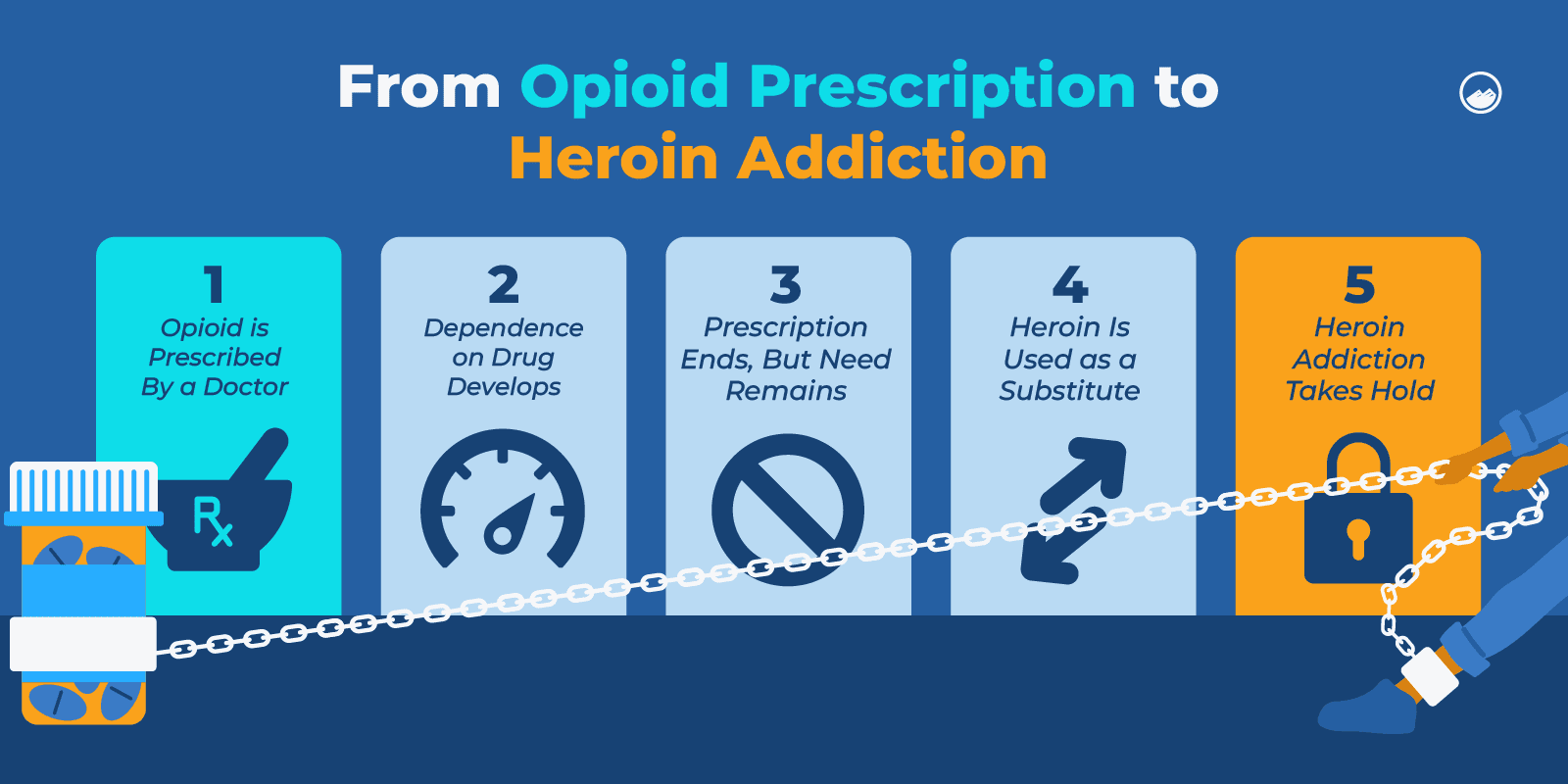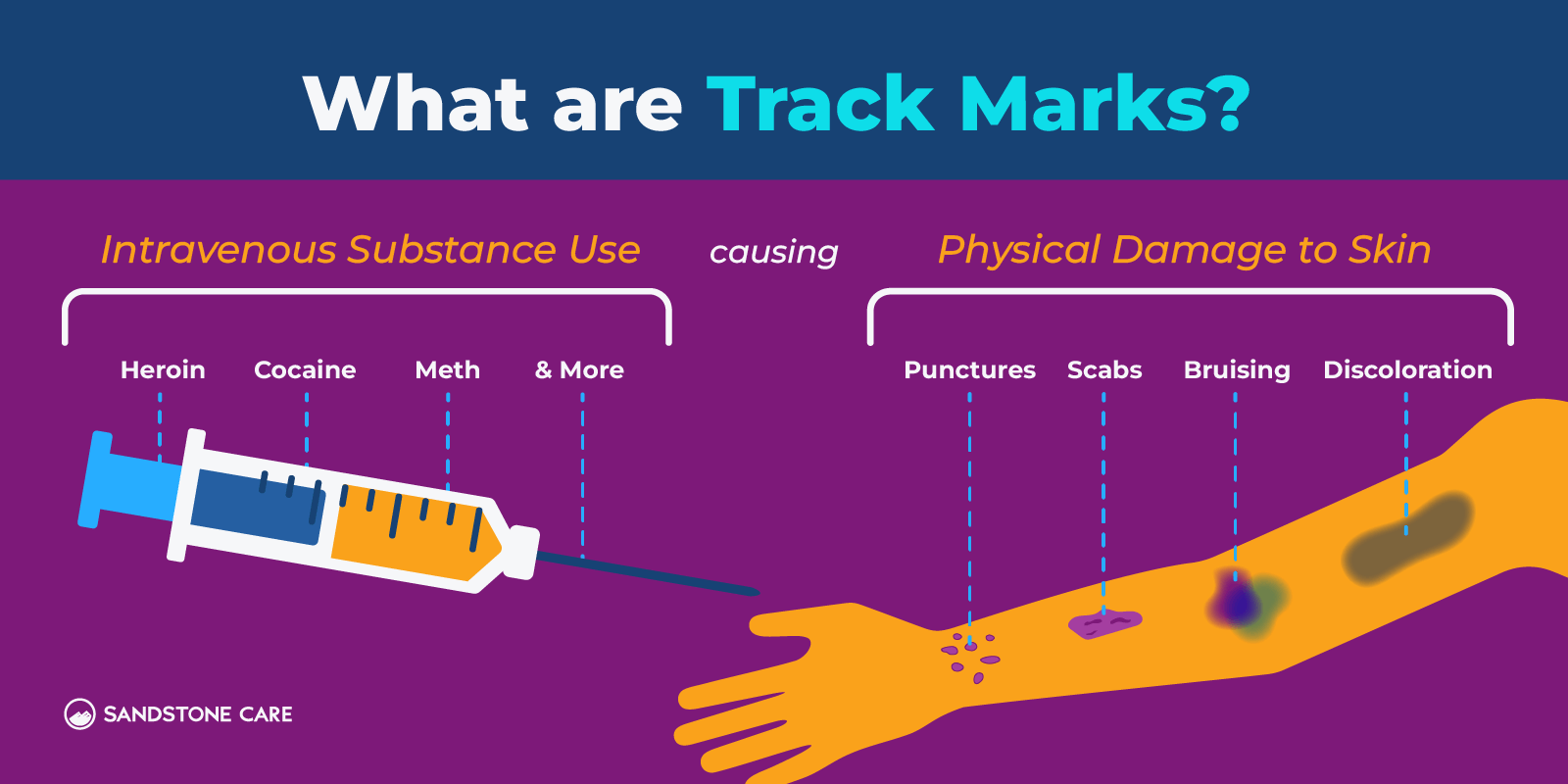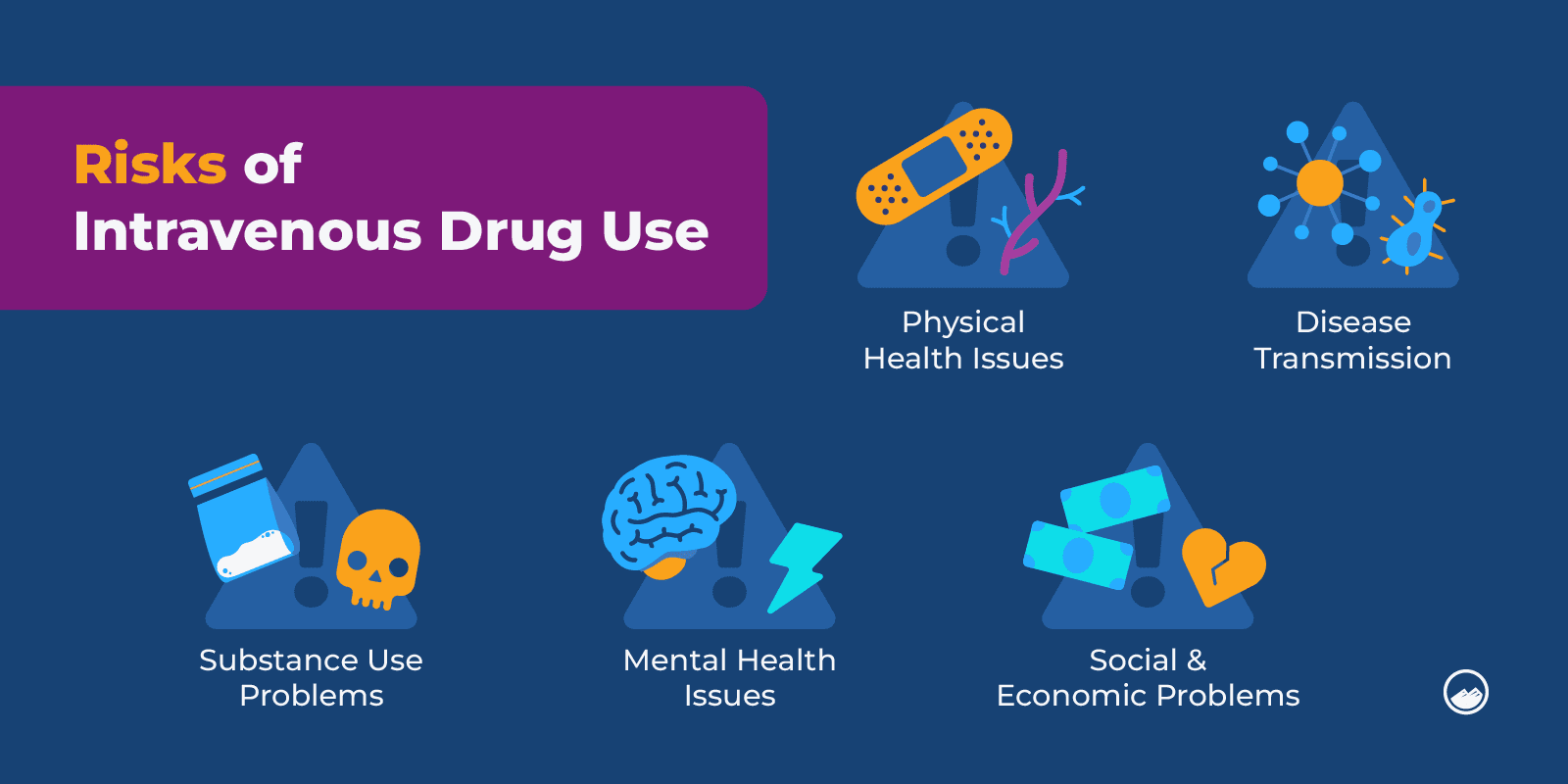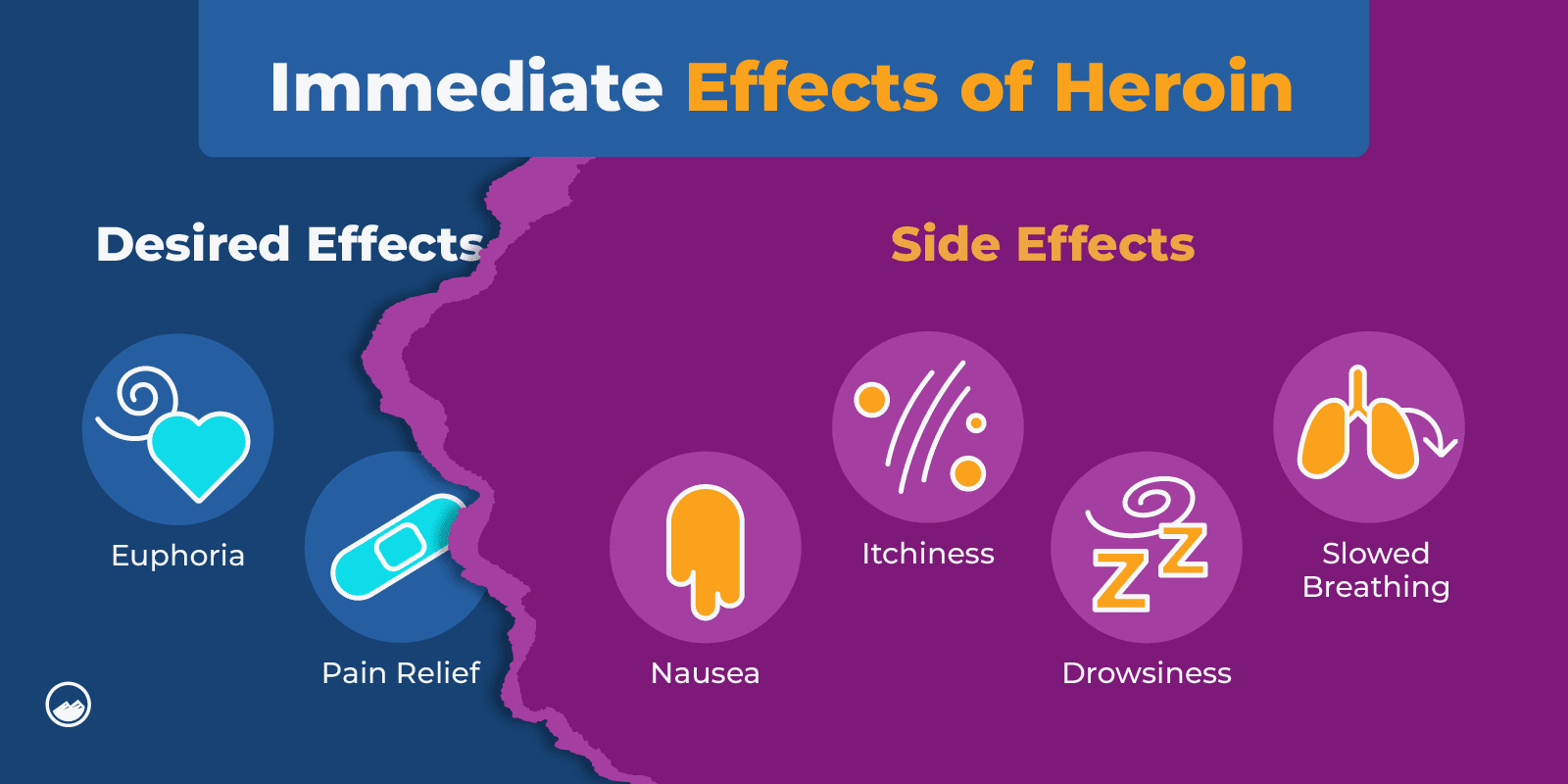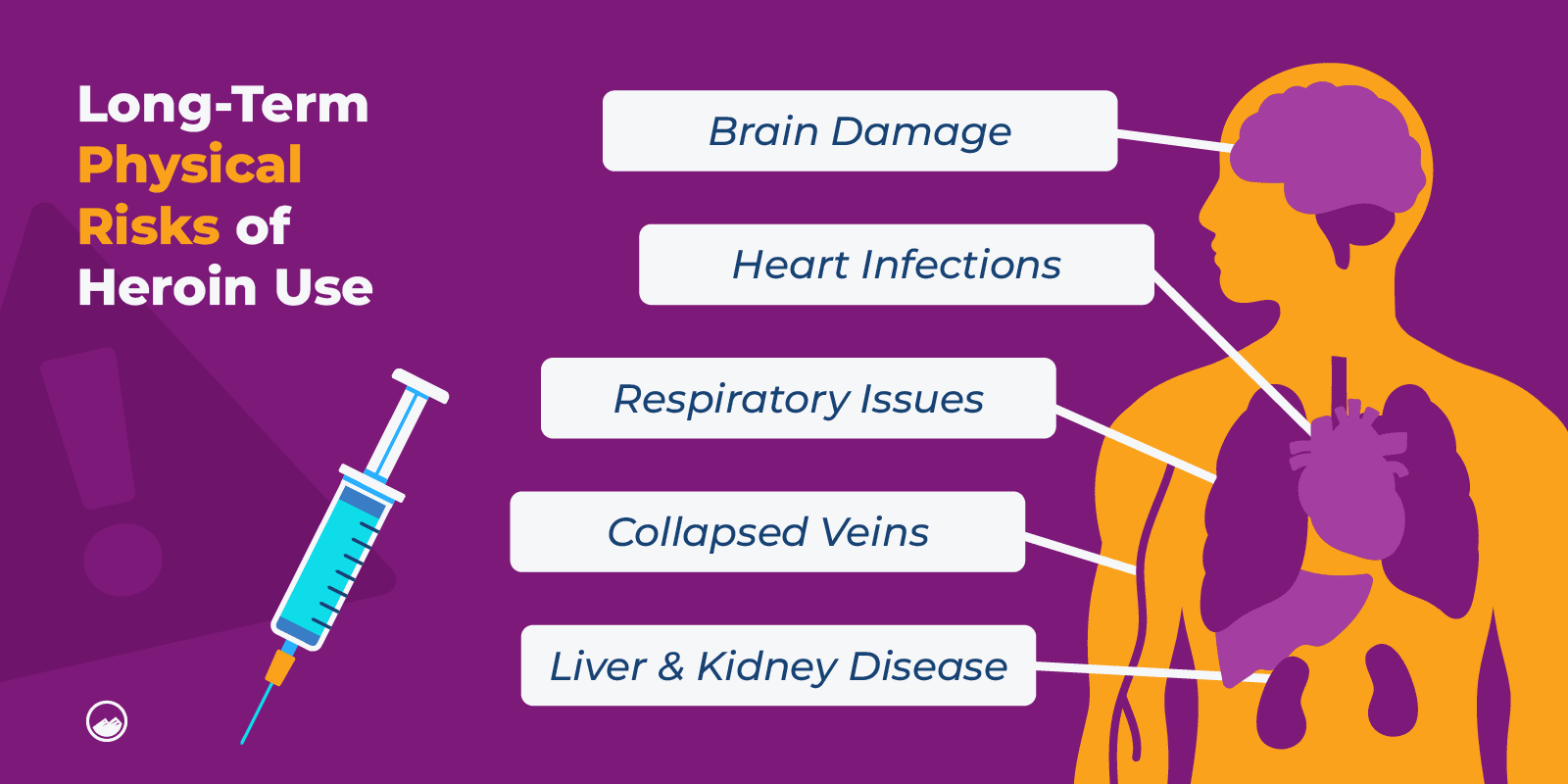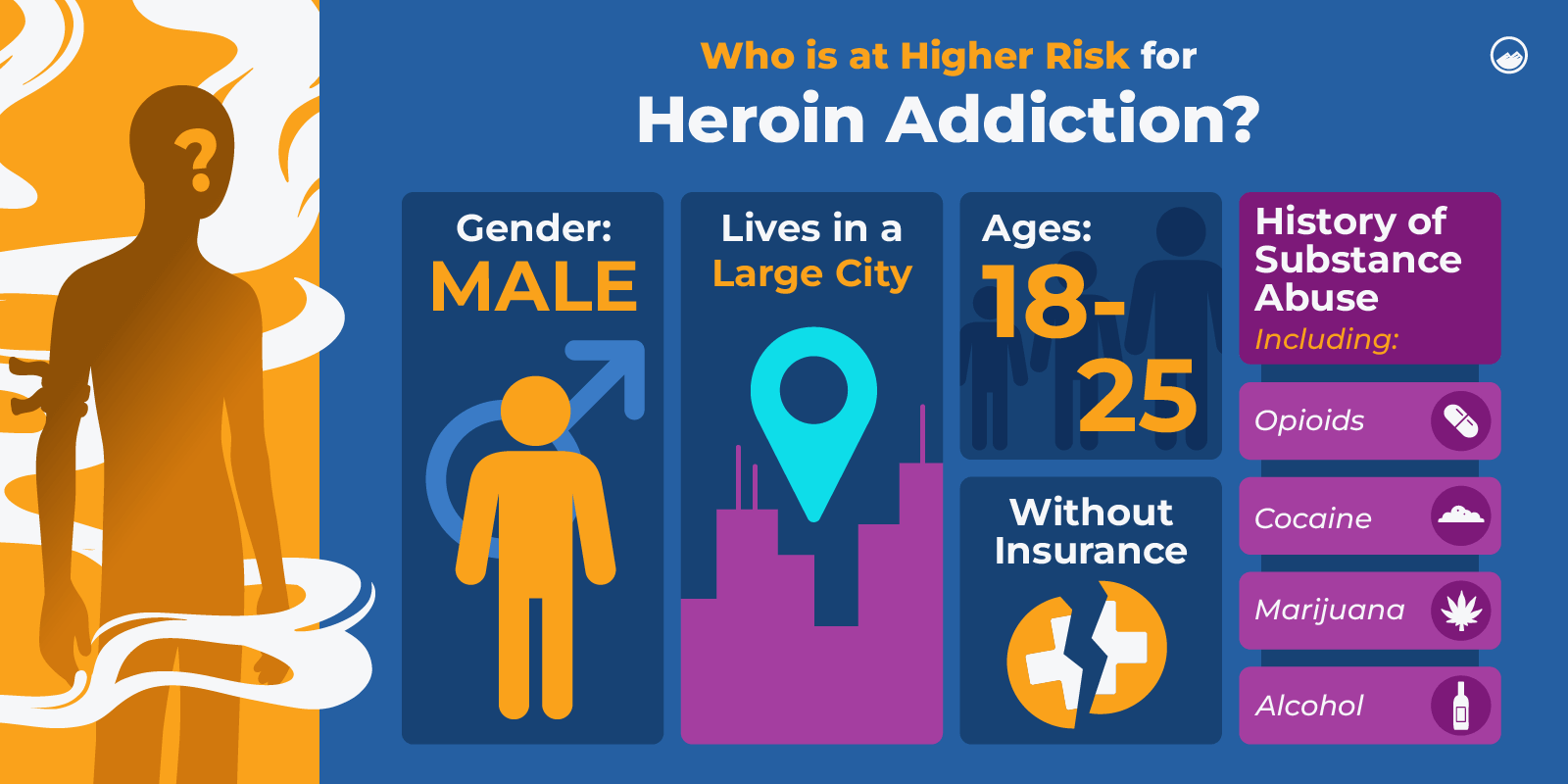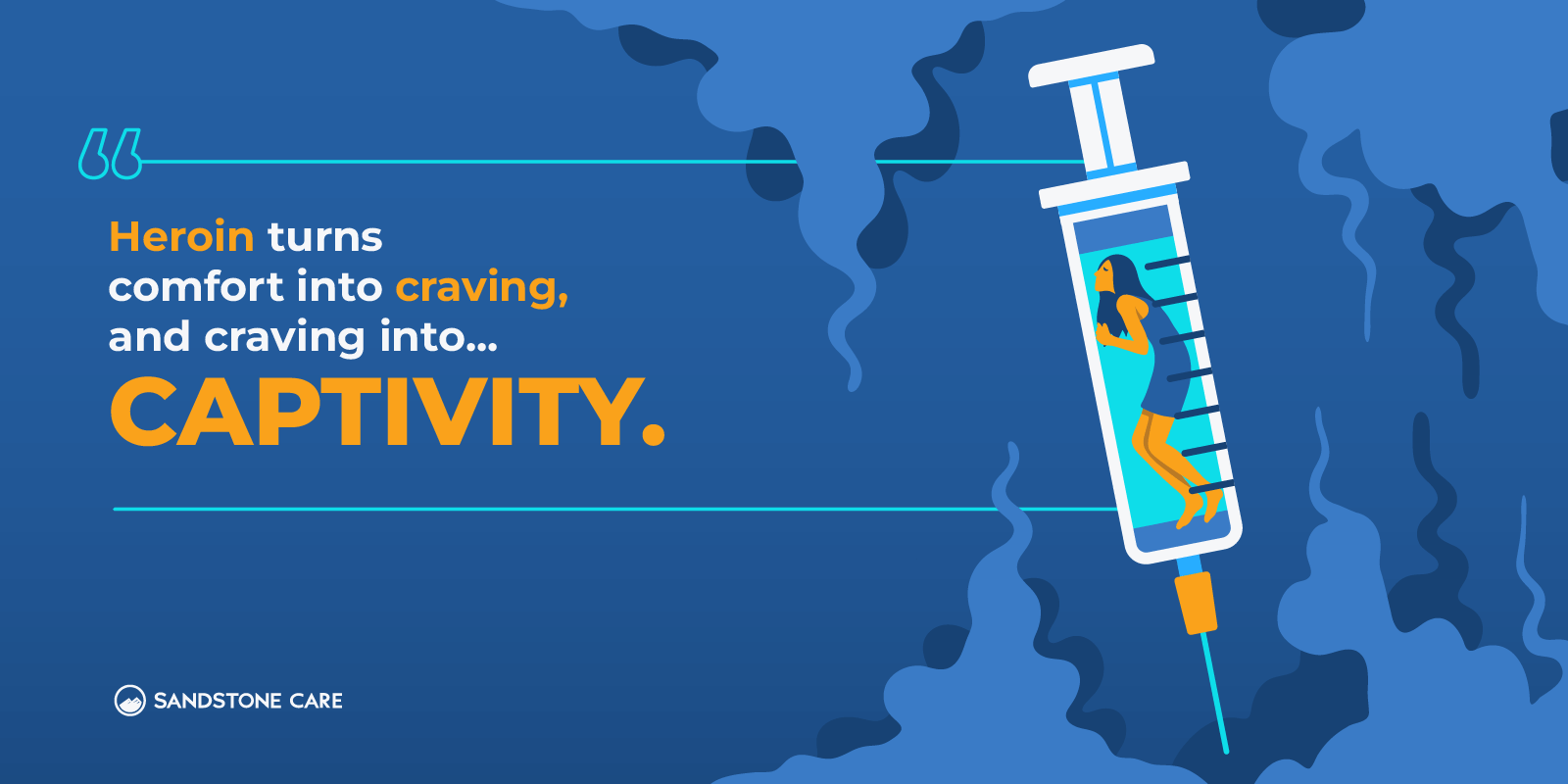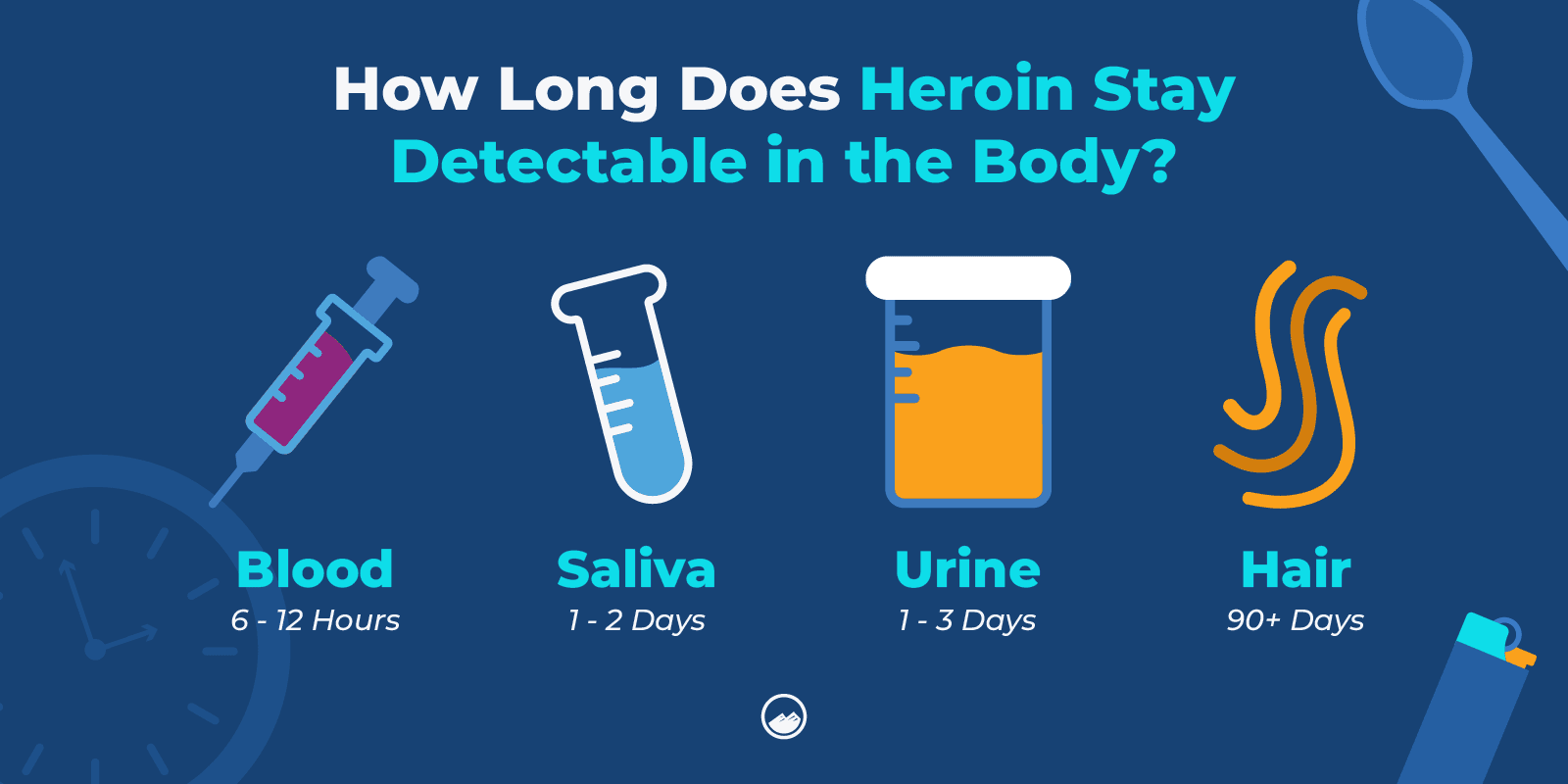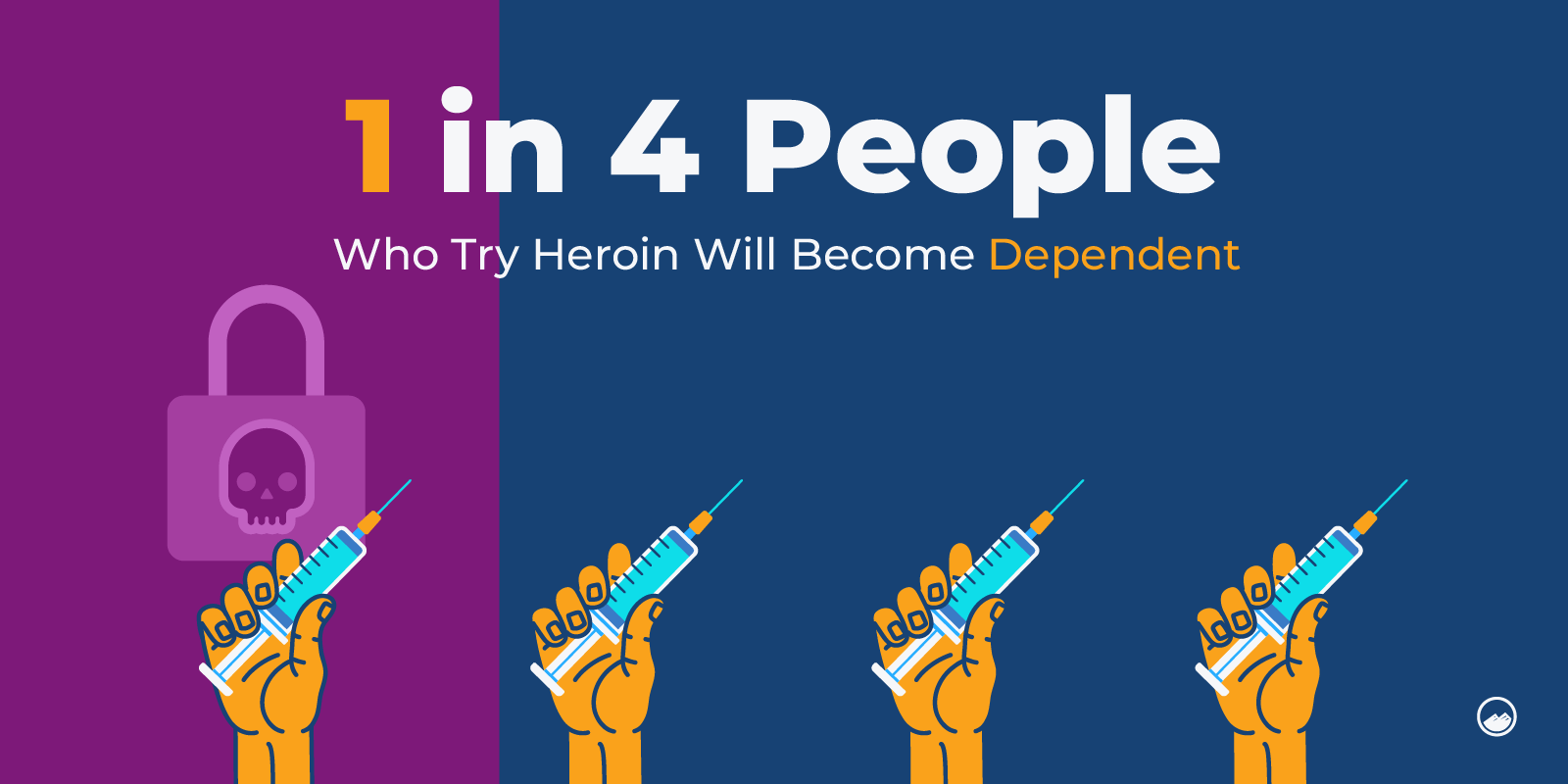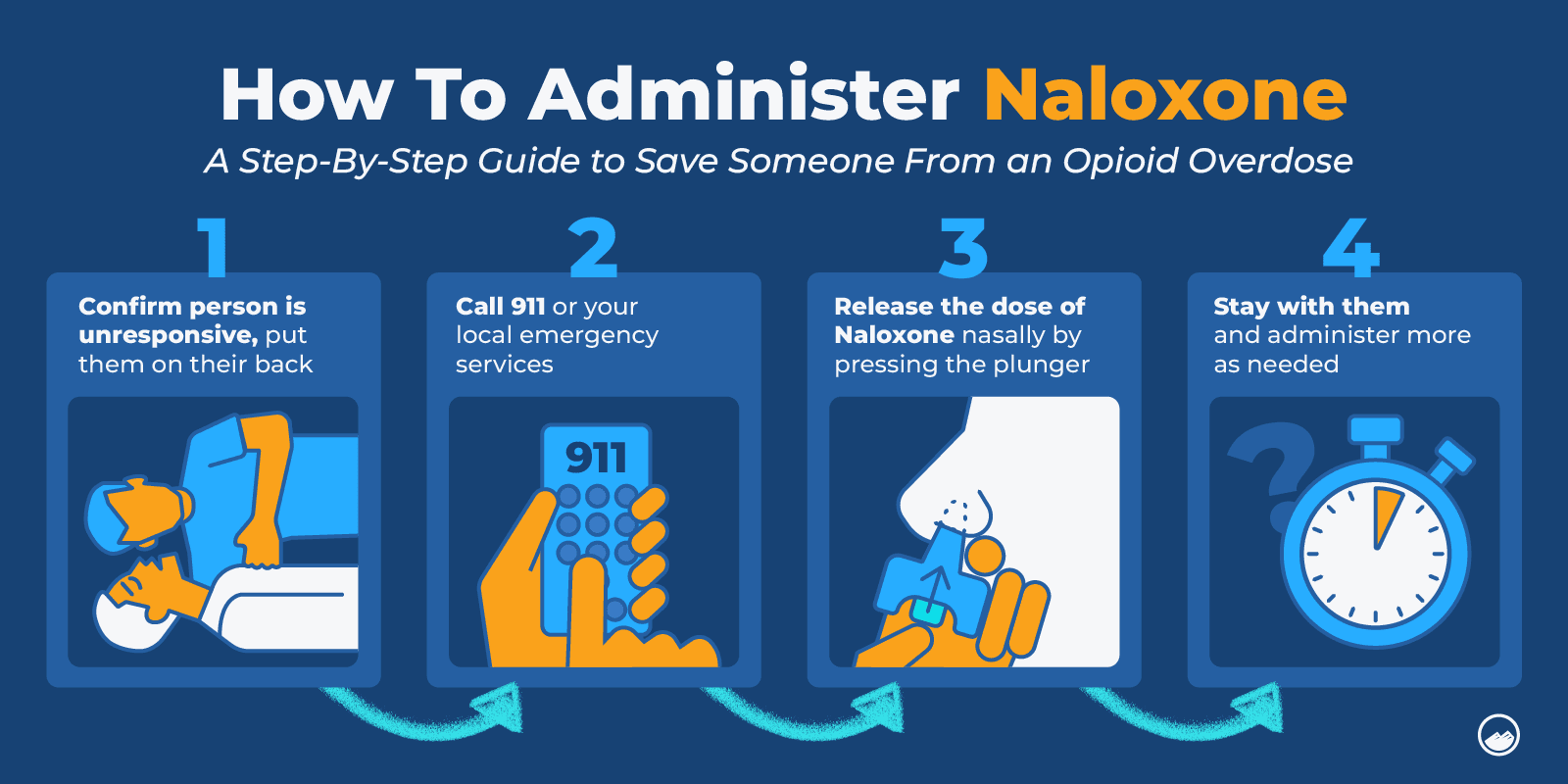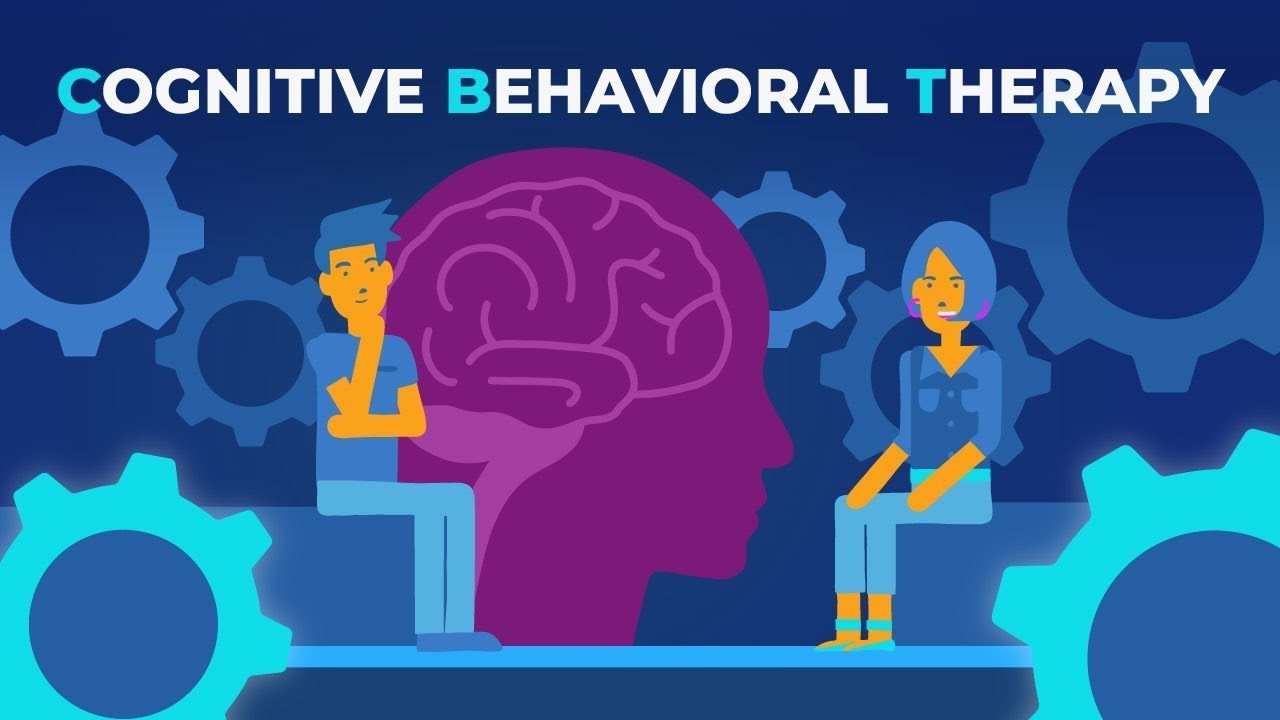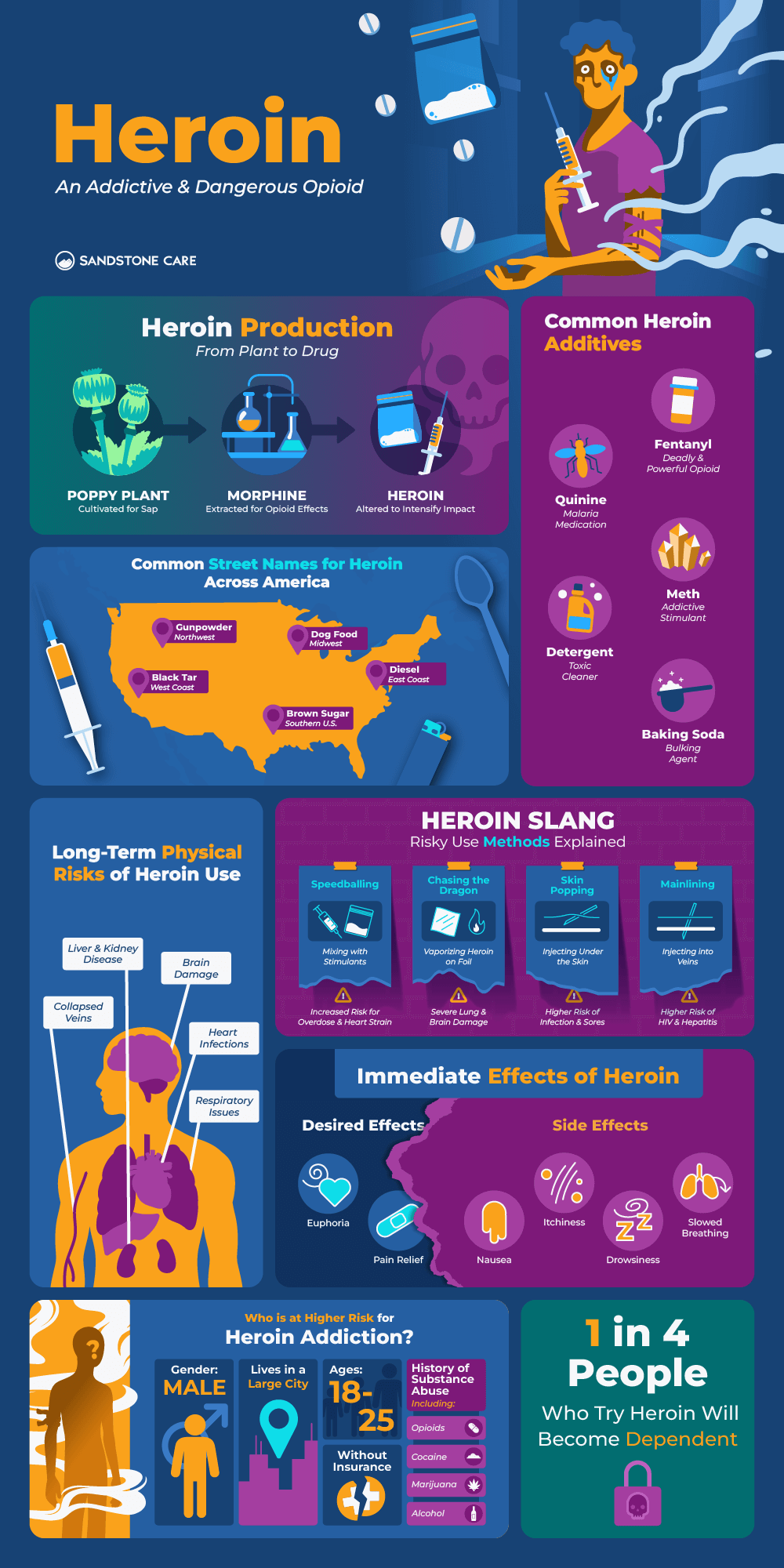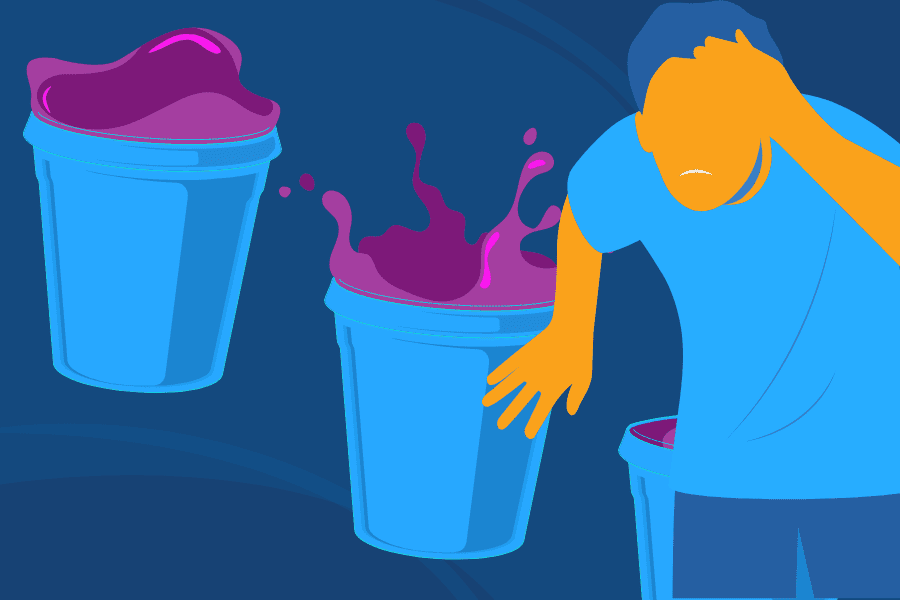Heroin Drug Overview
What Is Heroin and How Does It Affect You?
Heroin is a powerful, addictive, and illegal drug made from morphine, which comes from the opium poppy plant.
People use it by injecting, snorting, or smoking it. Heroin works quickly in the brain, creating a strong high that makes it very addictive.
When heroin enters the brain, it turns into morphine and binds to opioid receptors, which control pain and feelings of pleasure.
This causes an intense feeling of euphoria followed by drowsiness and slowed breathing. Over time, users need more heroin to get the same effects, which leads to addiction.
Long-term use can cause serious health problems, such as collapsed veins, infections, liver and kidney issues, and breathing difficulties. It also significantly increases the risk of overdose.
What Type of Drug Is Heroin?
Heroin is an narcotic opioid drug and a central nervous system depressant. It is classified as a Schedule I drug in the United States.
Being a Schedule I drug means has no accepted medical use and a high potential for abuse.
Heroin is derived from morphine, a natural substance extracted from the seed pod of certain poppy plants.
Heroin falls into the category of central nervous system depressants, meaning it slows down the systems that allow the brain and body to function.
By binding to opioid receptors in the brain, it produces effects like pain relief, euphoria, and sedation.
What Does Heroin Look Like?
Heroin can be a white or brown powder, but it can also be found as a black, sticky substance known as black tar heroin.
Heroin comes in many forms and colors. However, based on geographic location, purity and potency can be determined by different characteristics.
In the eastern United States, heroin most often appears in the form of a white powder. If the substance is less pure, it takes on an off-white or brown color.
In the western US, heroin is usually darker in color with a solid, sticky form to it, giving it the name “black-tar heroin”.
In their pure forms, neither version of heroin has a scent unless it is being smoked.
Heroin that is less pure might give off a “vinegary” scent.
Pure heroin is hard to come by on the streets. Often, drug dealers will cut it with other substances to be able to turn a bigger profit.
With no way of regulating heroin on the streets, buyers have no way of knowing exactly what is being mixed into the heroin.
Most street heroin is “cut” with additives such as sugar, starch, powdered milk, or quinine.
However, sometimes heroin that is bought off of the street includes baking soda, laundry detergent, caffeine, or even rat poison.
This causes the already-dangerous drug to be unpredictable and possibly deadly.
How Do People Use Heroin?
A person may use heroin by injecting, sniffing, snorting, or smoking it.
Pure heroin is most commonly snorted or smoked while black tar heroin is usually injected.
It is important to note that there is no safe way to consume heroin. Whether it is smoked, sniffed, or snorted, it is always putting the body under an extreme amount of risk.
Those who use heroin may also participate in a practice called “speedballing”, where a person mixes heroin with stimulants like crack cocaine.
Speedballing is extremely dangerous and can increase the risk of overdose.
People who “speedball” often think that by combining a depressant and a stimulant, they are reducing the negative effects of the drug.
However, people who speedball are actually increasing the risks of seriously damaging their brain and body.
The stimulant can mask the sedative effects of the depressant, leading users to take more of the depressant than they normally would, which increases the likelihood of overdose.
Additionally, the combination puts extreme stress on the body, especially the heart and respiratory system, as the drugs send conflicting signals.
What Are Other Words For Heroin?
Other common heroin street names can include:
- Brown Sugar
- Mud
- Dope
- White
- Snow
- Chiba
- Hell dust
- Cheva
- Black tar
- Horse
- Smack
- Thunder
Other slang terms for heroin may refer to its appearance, its effects, or be code names developed to avoid detection.
These can include phrases like “Big H”, “Dragon”, “Black Pearl”, and “Mud”.
The language around illegal drug use is constantly evolving, so there are always new terms being developed to refer to drugs like heroin.
For example, in 2018 the DEA identified over 250 words to refer to heroin alone.
How Addictive Is Heroin?
Heroin is an extremely addictive opioid. Over 1 million people reported having a heroin use disorder in the past year in the United States alone.
According to the Substance Abuse and Mental Health Services Administration (SAMHSA), heroin is fast-acting because it rapidly enters the brain, producing an almost immediate feeling of euphoria or “rush.”
This quick hit makes the drug particularly addictive, as users seek to recreate that intense high.
Heroin is named a Schedule I substance under the Controlled Substances Act, meaning it has no currently accepted medical use in the United States.
The DEA (Drug Enforcement Administration) has also noted that it has a high potential for abuse and drug addiction.
Heroin Use
What Was Heroin Originally Developed For?
In the 1890s, a German pharmaceutical company named Bayer marketed heroin as a substitute for morphine and cough suppressant.
The drug, chemically known as diacetylmorphine, was marketed under the brand name “Heroin.”
The word “heroin” derived from the German word “heroisch,” meaning heroic or powerful, due to its supposed benefits and the way it made users feel.
However, by the early 20th century, the medical community began to recognize how addictive the substance was, and heroin was eventually banned in most countries.
Where Is the Most Heroin Consumed?
According to the Heroin Research Report done by the National Institute on Drug Abuse, pure heroin dominates U.S. markets east of the Mississippi River.
“Black tar” is predominately sold in U.S. markets west of the Mississippi River along with many other painkillers and opiates.
Internationally, Russia and Central Asian countries report high levels of heroin use, largely because they are close to the heroin trafficking routes of Afghanistan.
What Receptors Does Heroin Interact With?
Heroin interacts with opioid receptors in the brain, mainly targeting mu-opioid receptors. These receptors are responsible for the “high” feeling, including intense euphoria and pain relief.
When heroin enters the brain, it quickly turns into morphine, which attaches to these receptors and causes a rush of dopamine, leading to its addictive effects.
Heroin also affects delta and kappa-opioid receptors, though not as much as the mu-opioid receptors.
These interactions contribute to pain relief for some, but they can also cause discomfort in users.
Heroin’s effect on these receptors not only creates the euphoric high but also leads to dangerous side effects like slowed breathing, which increases the risk of overdose.
Can You Smoke Heroin?
Yes, heroin can be smoked. When heroin is heated, it vaporizes and can be inhaled, commonly referred to as “chasing the dragon.”
Injecting heroin is more common, and it is widely perceived as being a more dangerous way to consume the drug by users.
However, while smoking heroin may seem like a less harmful method than injecting, it still carries severe health risks, including addiction, overdose, and respiratory issues.
No way of consuming heroin is safe, under any circumstances.
What Is the Connection Between Prescription Drugs and Heroin?
Prescription drugs like Oxycontin and Vicodin produce similar effects to those of heroin.
Studies suggest that the misuse of these prescription drugs may make a person more likely to use heroin.
Can You Take Gabapentin With Heroin?
No. Both drugs can depress the central nervous system, which can lead to slowed breathing, drowsiness, and in severe cases, respiratory failure.
According to the NIH, those who use heroin with gabapentin or pregabalin are at a high risk of overdose death.
Mixing heroin with other substances or synthetic opioids can be extremely dangerous and can quickly become life-threatening.
Heroin Track Marks
What Are Heroin Track Marks?
Heroin track marks are visible scars or bruises on the skin that develop after repeated injection of heroin into the veins, often referred to as intravenous drug use (IV drug use).
These track marks are typically found on areas of the body where veins are most accessible, such as:
- Arms (especially the forearms)
- Hands
- Legs
- Feet
- Neck or groin (in more extreme cases where veins in other areas are damaged or difficult to access)
What Do Heroin Track Marks Look Like?
Track marks typically appear as discolored, raised, or sunken scars on the skin, with bruising or puncture wounds that result from repeated needle injections into veins.
These marks can vary in appearance depending on the severity, frequency of use, and the individual’s skin type.
The following are the ways track marks appear:
- Bruising: Repeated injections into the same area can damage the vein, causing blood to pool under the skin, resulting in dark or purple bruises.
- Scarring: Over time, the puncture sites from the needles form scars that can be discolored, raised, or sunken.
- Infection or Abscesses: If proper hygiene is not followed, injection sites may become infected, leading to abscesses or cellulitis, which can worsen the appearance of track marks.
- Collapsed Veins: Long-term intravenous drug use can lead to the collapse of veins, making it harder to find new sites for injection, often causing users to move to other parts of the body.
Heroin users may attempt to cover these marks with long sleeves, bandages, or other means, but they can be difficult to hide.
Track marks can be a clear physical indicator of intravenous drug use and are often used by medical professionals as one sign of substance abuse when assessing an individual’s health.
Can a Person on Heroin Get Bruises?
Yes, a person using heroin can develop bruises, especially if they inject the drug intravenously. The bruising typically occurs due to the following reasons:
- Repeated Needle Insertion
Injecting heroin into veins can cause damage to blood vessels, leading to blood leakage under the skin, which results in bruising. - Collapsed or Damaged Veins
Long-term heroin use can cause veins to collapse or become damaged, making it harder to inject, which often leads to missed veins or leakage into surrounding tissues, causing bruising. - Poor Circulation
Heroin use may affect circulation and lead to fragile veins, making bruising more likely. - Infections or Inflammation
In some cases, frequent injection can lead to infections at the injection sites, which may cause swelling, redness, and bruising.
In addition, users may accidentally bruise themselves during periods of impaired coordination while under the influence of heroin.
These bruises can appear on the arms, legs, hands, or other areas where injections occur.
Heroin Effects on the Body
What Are the Health Risks of Using Heroin?
The use of heroin comes with many risks including addiction, overdose, and in some cases, fatality.
Additionally, heroin can cause long-lasting damage to the brain, and lead to medical complications such as insomnia, constipation, and lung complications.
Common additives found in street heroin can clog blood vessels and cause infection in the lungs, liver, kidney, and brain.
Shared equipment used for injected heroin, like needles, can also lead to infections of Hepatitis B, Hepatitis C, HIV, and other blood-borne illnesses.
What Are the Short-term Side Effects Of Heroin Use?
People who use heroin often experience what is referred to as a “rush”, which is a surge of a pleasurable sensation.
Other short-term side effects of heroin use can include:
- Drowsiness
- Respiratory depression
- Nausea and vomiting
- Warm flushing of the skin
- Severe itching
- Constricted pupils
- Heavy feeling in the arms and legs
- Dry mouth
- Going back and forth between consciousness and semi-consciousness, also known as “the nod”
- Breathing and heart function slows
- Mental function slows
Slowed breathing and heart function can be very dangerous and become life-threatening. It can also lead to coma and brain damage.
Other drugs such as Oxycontin, codeine, morphine, methadone, and fentanyl, can produce similar effects as those of heroin.
What Happens to the Brain After Long-term Opioid Use?
Long-term opioid use, including heroin, can severely impact the brain. Over time, opioids change how the brain manages pain and pleasure.
They reduce the brain’s natural production of endorphins, the chemicals responsible for making us feel good, and decrease the number of opioid receptors.
This leads to tolerance, meaning users need more of the drug to feel the same effects.
As opioid use continues, the brain becomes dependent on the drug to function properly.
Without it, withdrawal symptoms like anxiety, muscle aches, and cravings kick in. The brain struggles to maintain balance on its own, making it difficult for users to quit.
Opioids also affect cognitive functions, especially in areas of the brain responsible for decision-making, impulse control, and emotional regulation.
People who use opioids long-term may experience memory problems, poor attention, and difficulty making decisions, which can make it even more difficult to quit using heroin.
How Does Heroin Affect the Brain and Nervous System?
Heroin affects the brain and nervous system by binding to opioid receptors, triggering a surge of dopamine.
It also slows down critical functions like breathing and heart rate, which can lead to respiratory failure.
Over time, heroin can make changes to the brain’s structure, impairing decision-making and increasing tolerance.
The effects of heroin also commonly involve clouded mental functioning, and changes in consciousness, and can contribute to mental disorders such as anxiety or depression.
Heroin is also commonly “cut” with additives like sugar, starch, or powdered milk, which can clog the blood vessels that lead to the lung, livers, kidneys, and brain.
How Does Heroin Affect Your Heart?
Long-term heroin use can cause infection of the heart lining and valves.
Heroin can also slow down the heart, or cause an irregular heartbeat.
The effects of heroin on a person’s heart are extremely dangerous and can quickly become life-threatening.
Heroin Addiction
Who Is at the Highest Risk For Heroin Addiction?
According to the CDC, those at the highest risk for heroin addiction can include people who:
- Are addicted to prescription opioids or cocaine
- Are addicted to marijuana or alcohol
- Living in a large metropolitan area
- Are without insurance
- Are males
- Are ages 18 to 25
Additionally, people with mental health issues are far more likely to turn to substances like heroin to cope with symptoms they are experiencing.
This self-medication can lead to a dangerous cycle where users take heroin to feel happier or calmer, and then find that they cannot feel happy at all without taking higher and higher doses of heroin.
What Factors Contribute to Heroin Abuse?
Factors that may put a person at higher risk of substance use and heroin abuse can include:
- Family history of substance use
- Being in an environment where substance use is accepted or common
- History of mental health disorders
- Early use of drugs
- Peer pressure
Additionally, those who use opioids, even when they are initially prescribed, are at a higher risk of developing opioid use disorders such as heroin addiction.
What Are the Signs of Heroin Addiction?
If you’re concerned that a loved one might be using heroin, keep an eye out for these signs of heroin use:
- Visible injection sites
- Constricted pupils
- Significant weight loss
- Deterioration of personal appearance
- Tremors
- Neglecting responsibilities
- Not caring for personal hygiene
- Inexplicable need for money
- Always wearing long sleeves and pants, even in warm weather
- Sudden changes to friends and/or hobbies
If you notice these signs in a loved one, it’s crucial to act quickly.
Heroin addiction can progress rapidly, and the longer it continues, the harder it becomes to break the cycle.
Professional treatment, which often includes medical detox, therapy, and support groups, is essential for recovery.
Early intervention can make all the difference in preventing the devastating health consequences associated with heroin use, such as overdose and long-term brain damage
How Long Does It Take For a Person to Become Addicted to Heroin?
Heroin is a highly addictive drug and can quickly cause a person to become addicted after just a few repeated uses.
There is no set time for how long it takes for a person to become addicted, since everybody’s body and brain will react to heroin differently.
For some, addiction can develop within days or weeks, depending on factors like genetic predisposition, mental health conditions, and how often they use heroin.
What Are the Cardinal Signs of Drug Dependence?
Some of the most common signs of drug dependence and withdrawal can include:
- Nausea and vomiting
- Anxiety and depression
- Muscle weakness
- Body aches
- Sweating
- Nightmares
Drug dependence occurs when a person uses a drug over a period of time and experiences withdrawal symptoms if they stop using it.
What Percentage of Opioid Addicts Started With a Prescription?
According to research by the National Institute of Health, about 80 percent of people who used heroin first started with using prescription opioids.
Heroin Withdrawal
What Is Heroin Withdrawal?
Heroin withdrawal occurs as the body’s response to the decline or absence of heroin.
When heroin is used over time, the body becomes used to the alterations in natural levels and imbalances in the brain and body.
As a result, when a person stops using heroin, they will experience withdrawal symptoms because their body is so used to the drug.
How Long Does Heroin Stay In Your System
The amount of time heroin stays in your system depends on several factors, including how much was taken, frequency of use, metabolism, and the type of drug test used. Here are the general detection windows for heroin:
- Urine Test
Heroin can typically be detected in urine for 1 to 3 days after the last use. However, for heavy or chronic users, it may be detectable for up to a week. - Blood Test
Heroin is detectable in the blood for a much shorter period, usually around 6 to 12 hours after the last dose. - Saliva Test
Heroin can be found in saliva for 24 to 48 hours after use. - Hair Test
Heroin use can be detected in hair follicles for up to 90 days or more, depending on hair length and testing sensitivity.
Heroin is rapidly metabolized into morphine and other substances, which are what drug tests typically identify.
The exact duration it stays in the system can vary based on individual factors like liver function, body fat, and hydration.
What Happens If You Don’t Take Heroin?
For a person who has developed a dependence on heroin, when they stop taking heroin, they will experience withdrawal symptoms.
Heroin withdrawal occurs because the body has become used to functioning with the drug, and without it, the brain struggles to maintain balance.
Withdrawal symptoms are be both uncomfortable and dangerous, and can start as soon as a few hours after the last use.
Short-term Acute Symptoms of Heroin Withdrawal
Withdrawal symptoms can occur within a few hours after the drug has been taken, including:
- Restlessness
- Bone pain
- Muscle pain
- Nausea and vomiting
- Diarrhea
- Sleep problems
- Cold flashes
- Uncontrollable leg movements
- Severe cravings
If you or a loved one are experiencing heroin withdrawal, it is important to seek medical help right away and if you are in danger, call 911.
Medically-supervised withdrawal can help individuals with a dependence manage withdrawal symptoms in a safe and controlled environment.
Long-term Heroin Withdrawal Symptoms
Researchers are still studying the long-term effects of heroin withdrawal symptoms.
Studies have shown loss of the brain’s white matter can be associated with heroin use, which can affect a person’s decision-making, behavior control, and stress response.
Heroin Overdose
What Happens When You Overdose on an Opioid?
When a person overdoses on an opioid, their central nervous system becomes severely depressed, which can lead to a range of life-threatening effects. Here’s what typically happens during an opioid overdose:
- Severe Respiratory Depression
Opioids slow down breathing. In an overdose, breathing may slow dramatically or stop altogether, leading to hypoxia (lack of oxygen in the brain), which can cause permanent brain damage or death. - Extreme Drowsiness or Unconsciousness
The person may become extremely sleepy, difficult to wake, or lose consciousness entirely. They may not respond to stimuli like being shaken or shouted at. - Pinpoint Pupils
One of the classic signs of opioid overdose is pinpoint pupils, where the pupils become very small, even in dim lighting. - Slow or Irregular Pulse
The heart rate slows, and blood pressure can drop significantly, which may lead to cardiac arrest. - Bluish Skin or Lips (Cyanosis)
Due to the lack of oxygen in the body, a person’s skin, lips, or nails may turn blue or grayish, particularly around the mouth and fingertips. - Choking or Gurgling Sounds
Also known as the “death rattle,” this can occur when a person is struggling to breathe due to a lack of muscle control in their airway.
What Is the Best Thing to Do If You Overdose?
If someone overdoses on heroin or any opioid, taking immediate action is crucial to prevent life-threatening complications. Here are the most important steps to take:
- Call Emergency Services Immediately: Dial 911 or your local emergency number to get medical help as quickly as possible. Time is critical during an overdose, and emergency responders are trained to provide life-saving treatment.
- Administer Naloxone (Narcan): If available, use naloxone to reverse the effects of the overdose. Naloxone is an opioid antagonist that temporarily blocks the effects of heroin and can restore normal breathing. It can be administered via a nasal spray or injection, and many states allow for it to be available without a prescription.
- Ensure Open Airway and Monitor Breathing: Check if the person is breathing. If breathing has stopped or is severely slowed, provide rescue breathing or CPR if you’re trained to do so. Make sure the airway is clear of obstructions.
- Place the Person in the Recovery Position: If the person is unconscious but still breathing, place them on their side with their body supported to prevent choking in case they vomit. This is called the recovery position and helps keep the airway open.
- Stay with the Person Until Help Arrives: Never leave someone who is overdosing alone. Monitor their breathing and consciousness level, as opioid overdose symptoms can worsen rapidly.
Important: Even if naloxone is administered, it’s vital to get emergency medical help, as the effects of naloxone can wear off before the heroin is fully metabolized, leading to a re-occurrence of overdose symptoms.
How Can Heroin Overdose Be Treated?
Naloxone is a medication that can be used to treat opioid overdose if it is given right away.
Naloxone works by blocking the effects of heroin and quickly binds to opioid receptors.
Sometimes more than one dose is needed, so if you believe a person is experiencing a heroin overdose, call 911 or emergency services right away.
How Many Overdoses Are Caused By Heroin?
According to the CDC, in 2020, more than 13,000 people died from drug overdoses involving heroin in the United States.
What Is the Death Rate For Heroin?
According to the National Institute on Drug Abuse (NIDA), there were 5,871 overdose deaths involving heroin in the United States in 2022.
This represents a significant decline from previous years, particularly compared to the peak of heroin overdose deaths in 2016, when more than 15,000 deaths were reported.
The decline may be attributed to the rise of synthetic opioids like fentanyl, which are increasingly mixed with or substituted for heroin in the illegal drug market
Heroin Addiction Treatment
How Do You Diagnose Heroin Addiction?
Some criteria a person has to meet to be diagnosed with heroin addiction can include:
- Needing more and more of a substance to produce the same desired effects
- Facing negative consequences to one’s life, health, and relationships because of substance use
- Continuing to use it despite negative consequences
- Losing control over heroin use
- Experiencing withdrawal symptoms if substance use stops or significantly decreases
- Spending a significant amount of time and money obtaining, using, and recovering from a substance
Diagnosis of a heroin addiction involves thorough evaluation and assessments done by medical providers such as doctors, psychiatrists, psychologists, and mental health professionals.
If you believe you or a loved one may be addicted to heroin, it is important to seek professional help and get a proper diagnosis to make sure the person receives proper treatment.
Is It Possible to Overcome an Opioid Addiction?
Yes, it is possible to overcome opioid addiction.
If you or a loved one is addicted to opioids, one of the most important things to do in order to overcome addiction is to seek professional help.
To overcome opioid addiction, one has to take the necessary steps to get help and they have to want change.
Overcoming opioid addiction is not easy, but is necessary for your health and life.
What Is the First Step in the Treatment of Heroin Dependence?
One of the first steps in treating heroin dependence is recognizing that there is a problem and reaching out for help.
Once a person with heroin dependence enters treatment, they will need to safely detox from the drug.
Medication-assisted treatment (MAT) is often used to help those with opioid dependence safely manage withdrawal symptoms with medical supervision.
Every person’s treatment and addiction recovery journey is different. What works for one may not work for another. It is important to find the treatment that fits your specific needs the best.
What Do You Do If You Think Your Child Is Using Heroin?
As a parent, one of the best things you can do for your child is to be there for them and steer them in the right direction.
While heroin abuse is undoubtedly concerning, the good news is that effective treatment is available.
Because the drug is so addictive, the withdrawal process is difficult and requires incredible support from friends and family.
Know that you can contact Sandstone Care at any time with questions or to see if one of our programs is the right fit for your family. Call us today at (888) 850-1890.
What Is the Best Medication For Heroin?
There are a number of different therapies and medications used to treat heroin addiction.
The medicine, lofexidine, is an FDA-approved medication that can help with opioid withdrawal symptoms.
Medications that can help a person stop using heroin can include buprenorphine and methadone.
These medications work by binding to the same opioid receptors as heroin does, and helps to reduce cravings and withdrawal symptoms.
Naltrexone is another medication that blocks opioid receptors and prevents opioids from having an effect.
The best treatment depends on each individual.
How Is Heroin Use Disorder Treated?
There are various treatments that can be effective for heroin use disorder and addiction.
Treatment often involves both behavioral therapies and medications.
Cognitive-behavioral therapy (CBT) is a common form of psychotherapy used to treat numerous mental health disorders, substance use disorders, and addictions, including heroin addiction.
CBT can help individuals understand how their thoughts, feelings, and actions are all connected and use that to restructure unhealthy behaviors.
CBT can be done in both a group and individual setting and can teach people healthy coping mechanisms.
Contingency management (CM) is another common treatment approach for heroin use disorder.
Contingency management can involve a voucher-based system where individuals are rewarded for positive behaviors, such as abstinence from drugs.
For example, a person may receive a voucher that holds monetary value for things that align with a drug-free lifestyle in return for a negative drug test.
How Do You Fight an Opioid Epidemic?
In 2017, the U.S. Department of Health and Human Services declared a public health emergency regarding the opioid crisis.
Opioid use and opioid overdose have become increasingly concerning issues, causing people to want to know how to protect their loved ones and fight the opioid epidemic.
Some ways that communities and policymakers can fight the opioid epidemic can include:
- Better education and research on opioids
- A better understanding of data regarding opioids
- Better pain management, monitoring prescription opioids
- Providing training for the use of naloxone
- Better mental health and substance use treatment resources

We’re available 7 days a week to help answer any questions you may have.
Our Accreditations
